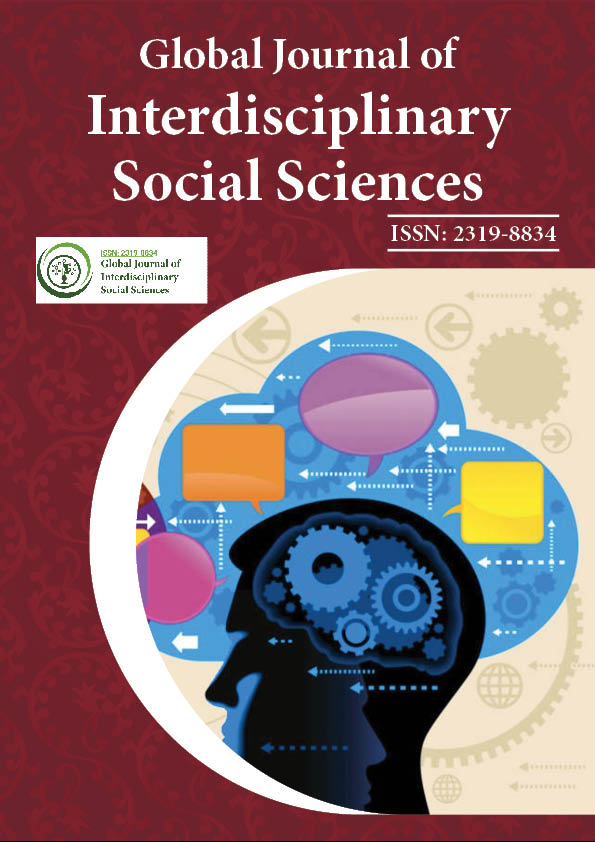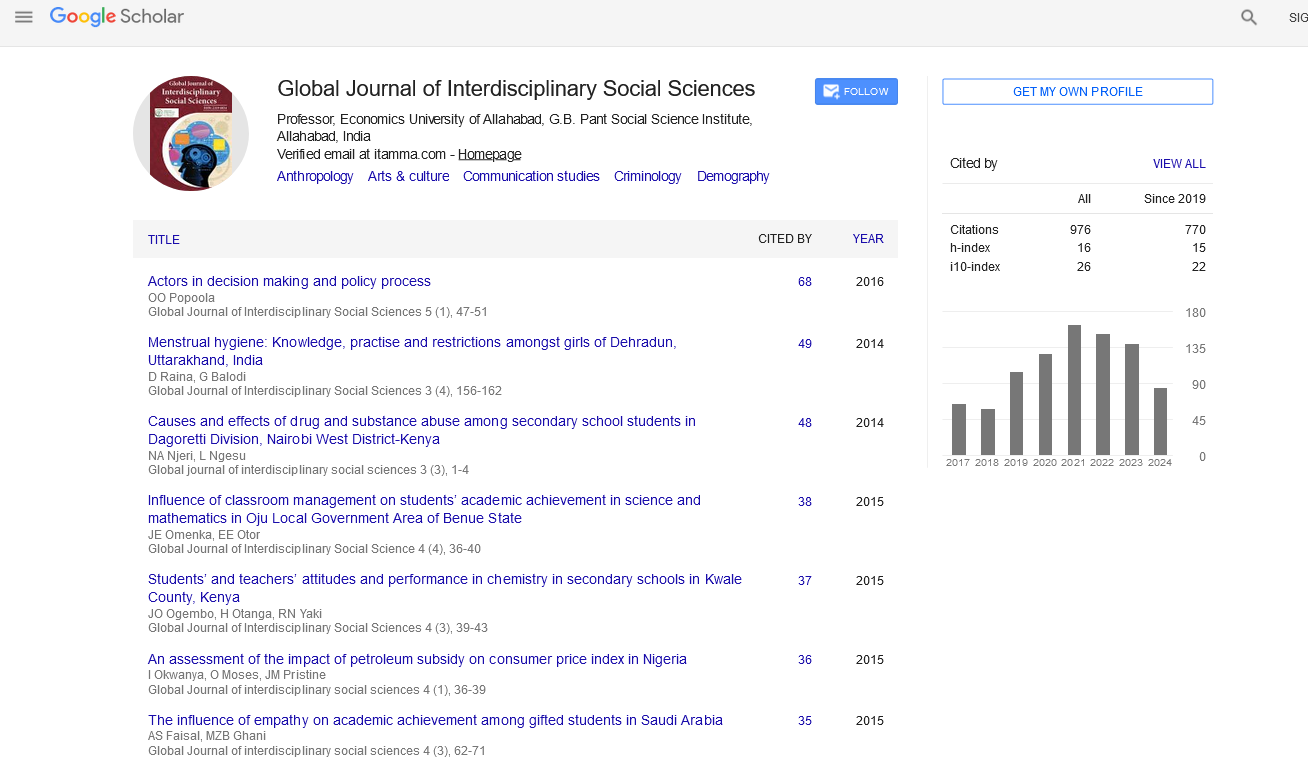Indexed In
- JournalTOCs
- Google Scholar
Useful Links
Share This Page
Journal Flyer

Open Access Journals
- Agri and Aquaculture
- Biochemistry
- Bioinformatics & Systems Biology
- Business & Management
- Chemistry
- Clinical Sciences
- Engineering
- Food & Nutrition
- General Science
- Genetics & Molecular Biology
- Immunology & Microbiology
- Medical Sciences
- Neuroscience & Psychology
- Nursing & Health Care
- Pharmaceutical Sciences
Opinion Article - (2023) Volume 12, Issue 1
The Criminology of Child Labor: Exploring the Correlation with Homicide
Nancy C. Furedy*Received: 01-Mar-2023, Manuscript No. GJISS-23-20577; Editor assigned: 06-Mar-2023, Pre QC No. GJISS-23-20577(PQ); Reviewed: 20-Mar-2023, QC No. GJISS-23-20577; Revised: 27-Mar-2023, Manuscript No. GJISS-23-20577(R); Published: 03-Apr-2023, DOI: 10.35248/2319-8834.23.12.047
Description
Child ragpickers, or children who are made to work for a living by collecting and sorting through trash, are often subjected to extreme poverty, malnutrition, and physical and emotional abuse. Many of these children are unable to attend school and are concerned to work long hours in hazardous conditions just to make enough money to survive. As a result, they are vulnerable to a range of social problems, including substance abuse, crime, and violence. One area of particular concern is the link between child ragpickers and homicide. Sociological studies have shown that youngsters who are sent to work in garbage dumps are more likely to engage in violent behavior, including homicide, than their peers who are not exposed to such extreme conditions. This article will examine some of the factors that contribute to this link and explore potential solutions for addressing this issue.
One of the primary factors that contributes to the link between child ragpickers and homicide is the extreme stress and trauma that these children are subjected to on a daily basis. Many child ragpickers are concerned to work long hours in hazardous conditions, often without adequate food or water. They are also frequently exposed to violence, both in their homes and in their workplaces. All of these factors can lead to high levels of stress and trauma, which can increase the likelihood of violent behavior. Another factor that contributes to the link between child ragpickers and homicide is the lack of support and resources available to these children. Many child ragpickers have little to no access to education or healthcare, and they are often concerned to live in squalid conditions. This lack of support and resources can make it difficult for them to break out of the cycle of poverty and violence, which can increase the likelihood of criminal behavior.
There are several potential solutions for addressing the link between child ragpickers and homicide. One approach is to provide these children with access to education and healthcare. This can help to break the cycle of poverty and violence that often leads to criminal behavior. Another approach is to provide them with vocational training and job opportunities, which can help them to build a more stable and secure future. In addition, it is important to address the root causes of poverty and inequality that contribute to the exploitation of child ragpickers. This may involve addressing issues such as corruption, lack of access to land and resources, and discrimination based on race, gender, or social class. By addressing these underlying issues, it may be possible to reduce the number of children who are forced to work in hazardous and exploitative conditions.
In conclusion, the link between child ragpickers and homicide is a complex and multifaceted issue that requires a comprehensive approach to address. By providing these children with access to education, healthcare, and job opportunities, and by addressing the root causes of poverty and inequality, it may be possible to reduce the number of children who are concerned to engage in violent behavior. However, this will require a sustained effort from governments, civil society organizations, and the international community as a whole.
Citation: Furedy CN (2023) The Criminology of Child Labor: Exploring the Correlation with Homicide. Global J Interdiscipl Soc Sci.12:047.
Copyright: © 2023 Furedy CN. This is an open-access article distributed under the terms of the Creative Commons Attribution License, which permits unrestricted use, distribution, and reproduction in any medium, provided the original author and source are credited.

